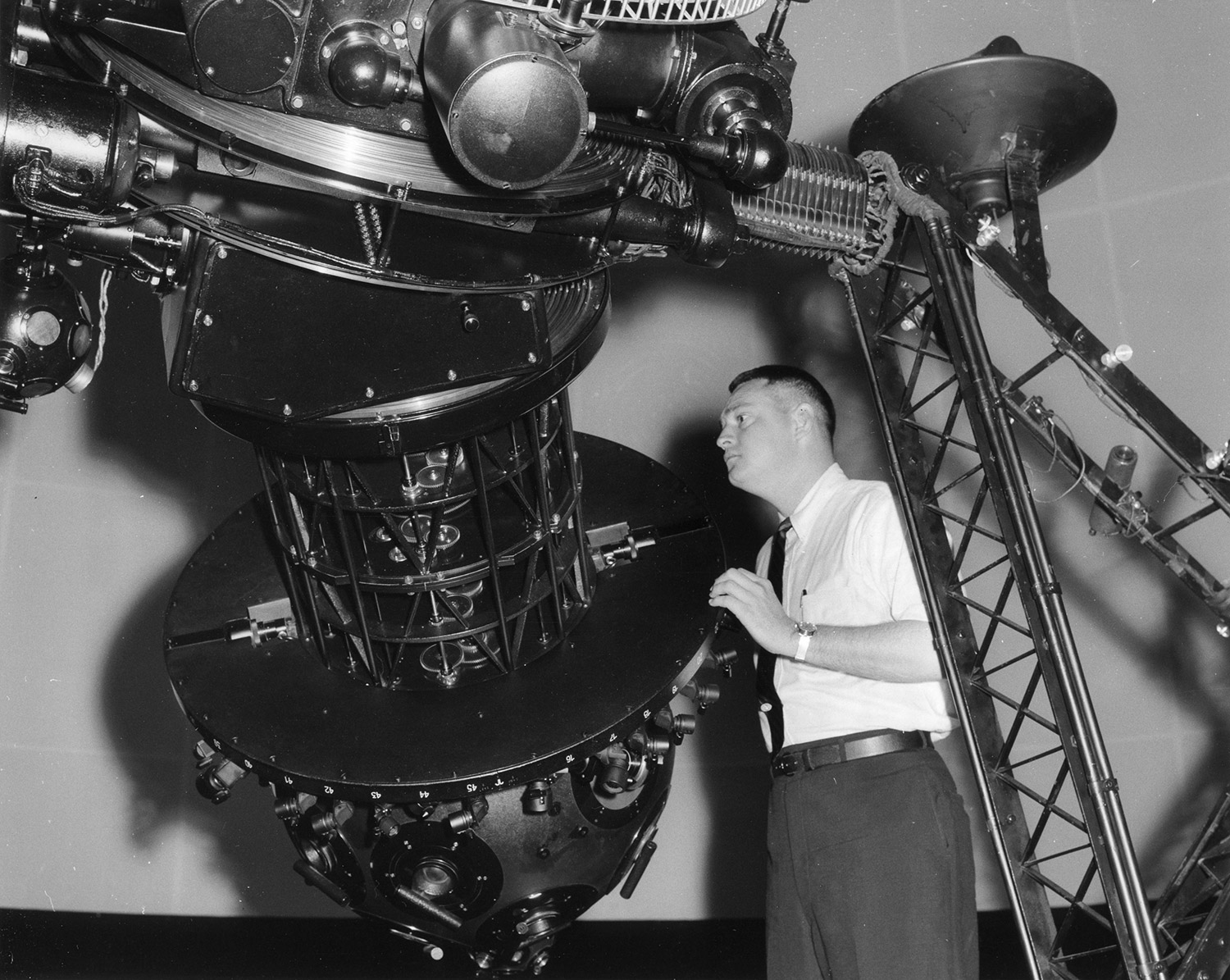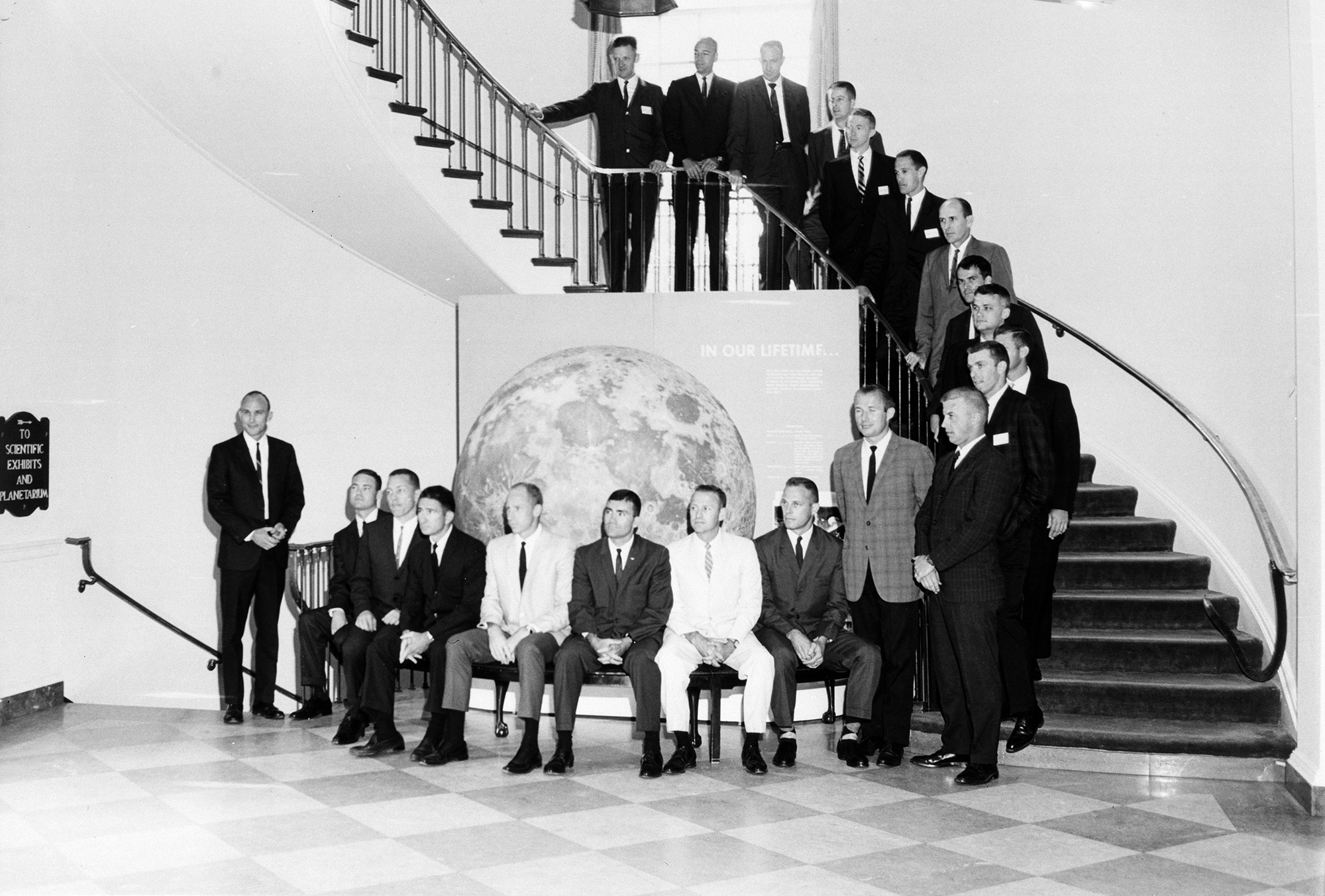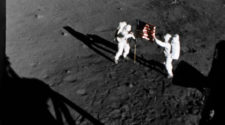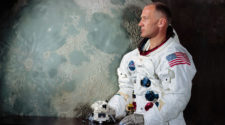You might not think a visit to a planetarium could save your life, but that’s how at least seven astronauts see the Morehead Planetarium and Science Center in Chapel Hill, N.C.
Nearly every astronaut in the Mercury, Gemini, Apollo, and Skylab programs made multiple visits to Morehead to learn celestial navigation. Each spent at least two days learning the basics of celestial mechanics and practicing star recognition.
Astronaut training began at the NASA’s Langley Research Center in nearby Hampton, Va. Morehead’s location allowed astronauts to keep their six-day a week schedule by landing their T-33 and T-38 trainer jets at the university’s airport before moving on to Cape Canaveral, Houston, or Langley for additional training or briefings.
It all began in 1960 planetarium director Anthony Jenzano saw the facility’s potential in teaching America’s newly minted heroes how to find their way in space. Planetarium technicians put their experience building special effects to enhance public shows to work creating a training environment which replicated challenges astronauts might face in their capsules should something go wrong. And something did go wrong, more than once.
“If all else fails, we will use the stars as our only reference.” – Gemini astronaut Walter Cunningham.
The facility’s Zeiss Model II star projector was among the finest in the country. It had recently been upgraded to more accurately represent the 42 brightest stars. It was also capable of displaying stars visible from both the Northern and Southern hemispheres giving astronauts a much needed and unfamiliar view.

The first day of training began at 8:30 a.m. with an introduction to the facility and the Zeiss projector. Astronauts quickly rolled up their sleeves as Doctoral candidate James Batten provided an introduction to the celestial coordinate system that would be used throughout the training to identify stars as they passed through view ports of their simulated spacecraft. The remainder of the day was spent learning to identify constellations of the zodiac and their stars in sequence. The second day of training focused on star identification and practicing course corrections along the planned orbital path of each astronaut’s mission. A “spin-the-world” game was developed where star positions were shifted with the projector lamp off to simulate a spacecraft off course.
“I thought I knew a lot about the stars but I found there was more to know that I had anticipated” commented Mercury astronaut Gordon Cooper.
Planetarium technicians created increasingly complex trainers to match the view and controls astronauts would have from their capsules. A small mechanical flight simulator originally used to train pilots during World War II was modified to simulate the yaw controls of a Mercury capsule’s thrusters. Simulators were also created for Gemini and Apollo capsules seating multiple astronauts. Materials used to ranged from plywood and paint to simple cardboard and tape to an old barber chair.
Some astronauts continued star identification as they flew from training site to training site.
“You’ve got a wonderful view of the sky and it was a great opportunity to practice. We would be flying at a high altitude of 40,000 feet and would turn the lights completely down in the cockpit.” Neil Armstrong recalled. Armstrong spent the most time training at Morehead, 130 hours over 20 days.
That knowledge gained under the planetarium dome was put to mission and life saving use at least three times.
During the final orbits of the final Mercury mission, navigational controls failed. Gordon Cooper recalled his Morehead training, using the stars to aligned his “Faith 7” spacecraft to the 34º angle required to prevent burning up during re-entry. Cooper’s splashdown was the most accurate in mission history.

Thirty-six seconds after lift-off of Apollo 12, two bolts of lightning struck the rocket and traveled down the ionized exhaust plume to the ground. The Saturn V rocket itself triggered a lighting discharge as it passed through electrically charged grey rain clouds. Power in the command module failed, all systems were down and the astronauts were on emergency batteries three miles over Florida. John Aaron, a quick thinking 24-year-old engineer recalled a little used switch in the capsule. His recommendation to “switch SCE to AUX” restored power to the mission but astronauts Charles “Pete” Conrad, Jr., Richard Gordon, Jr. and Alan Bean were still in low earth orbit without a functional navigation system. They were able to reset the guidance system by sighting key stars allowing the mission to continue.
An explosion in an oxygen tank crippled power generation aboard Apollo 13 en-route to for a moon landing. The capsule, service module and lunar lander were left with limited power forcing navigation systems to be switched off.
The crew verified their position via the stars as they continued for a fly-by while engineers (including John Aaron) figured out how to get the crew home. Debris from the explosion further complicated things making spotting those stars difficult. The view cleared in time for command module pilot John Swigert to locate stars Altair and Vega hours before a safe reentry.
Apollo 13 astronaut Jim Lovell even passed on some of what he learned at Morehead 25 years later to actor Tom Hanks. Hanks visited Lovell at his Horseshoe Bay, Texas home to prepare for the Apollo 13 movie. Lovell took him flying at night, pointing out the stars he’d learned about at Morehead. “Antares and Nunki, the two stars we saw on Apollo 13 as we flew into the shadow of the moon.”
Donald K. Slayton was the last astronaut to train at Morehead in 1975 for the Apollo-Soyuz mission. The program ended as NASA moved on to the Space Shuttle and its more reliable guidance computers.
You can visit The Morehead Planetarium and Science Center on the campus of the University of North Carolina at Chapel Hill and learn about the same stars under the same dome as 62 astronauts. Or visit the center’s website at www.moreheadplanetarium.org.

Learning about the night sky from where you live
Not everyone will be able to travel to North Carolina and learn about the stars just like the early astronauts did, however, that doesn’t mean you can’t learn from where ever you are.
There are hundreds of planetariums located across the United States. To find the closest planetarium to you, check out the state-by-state list at:
http://www.go-astronomy.com/planetariums.htm
Wikipedia has a worldwide list of planetariums at:
http://en.wikipedia.org/wiki/List_of_planetariums
There are also a large number of astronomy clubs located throughout the country. These clubs if asked will often bring telescopes to your school for a star-viewing party. Check out the Night Sky Network to find the nearest astronomy club at:
http://nightsky.jpl.nasa.gov/club-map.cfm
To learn more about the Universe itself, we suggest visiting these two websites:
http://www.cosmos4kids.com/
http://solarsystem.nasa.gov/planets/







